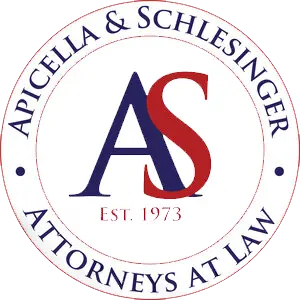New York car accidents, regardless of their type, can lead to a wide range of injuries, some of which may have long-term consequences.
Car accidents in New York are not just statistics; they represent a daily reality for many and carry the potential for life-altering consequences. The bustling streets of New York, with its unique blend of taxis, commuters, and pedestrians, create a hotbed for vehicular mishaps. Understanding the common injuries resulting from these incidents is crucial, not only for navigating the aftermath but also for recognizing the significance of legal and health interventions.

Common Types of Car Accidents Common in New York
- Rear-End Collisions: A staple of New York’s congested traffic, rear-end collisions occur when a vehicle crashes into the one in front of it. Often resulting from sudden stops, distracted driving, or tailgating, these accidents can vary in severity. In the city’s stop-and-go traffic, even low-speed impacts can lead to significant injuries, emphasizing the need for constant vigilance and safe following distances.
- T-Bone Accidents: T-bone accidents, also known as side-impact collisions, typically occur at intersections and involve the front of one vehicle colliding with the side of another. These accidents are particularly common in urban areas where dense traffic and complex intersections abound. The nature of these crashes can lead to severe injuries, given the limited protection provided by the side of a vehicle compared to the front or rear.
- Pedestrian Accidents: New York’s streets are as much for pedestrians as they are for vehicles, leading to a significant number of pedestrian accidents each year. These accidents often occur at crosswalks and intersections, places where pedestrians and vehicles are in close proximity. The consequences for pedestrians can be devastating, given their vulnerability compared to the mass and speed of motor vehicles.
- Other Notable Accident Types: While rear-end collisions, T-bone accidents, and pedestrian incidents are among the most common in New York, other types of accidents also pose significant risks. Head-on collisions, though less frequent, are extremely dangerous and often result from wrong-way driving or losing control. Multi-vehicle pile-ups, though more common on highways and in severe weather conditions, can also occur in the city’s more congested areas, leading to a complex web of injuries and legal considerations.
Common Injuries from Car Accidents
Car accidents, regardless of their type, can lead to a wide range of physical injuries, some of which may have long-term consequences. Understanding these common injuries can help victims recognize the severity of their situation and seek appropriate medical and legal assistance.
- Whiplash and Neck Injuries: Perhaps the most associated injury with rear-end collisions, whiplash occurs when the force of impact abruptly jerks the head and neck forward and then backward. This can strain or tear the neck muscles and tendons, leading to pain, stiffness, and reduced range of motion. In more severe cases, cervical vertebrae can be damaged, requiring more intensive treatment and longer recovery periods.
- Concussions and Traumatic Brain Injuries (TBI): The sudden and violent jolts common in car accidents can cause the brain to move within the skull, potentially leading to concussions or more severe traumatic brain injuries (TBIs). Symptoms can range from headaches and dizziness to more severe cognitive and neurological impairments. The impact of a TBI can be far-reaching, affecting not only physical health but also cognitive functions, emotional well-being, and overall quality of life.
- Broken Bones: The force exerted during a car accident can easily break bones, particularly in the arms, legs, ribs, and pelvis. The nature of the break can vary widely, from simple fractures that may heal with minimal intervention to compound fractures that require surgical repair and extensive rehabilitation.
- Spinal Cord Injuries: Spinal cord injuries are among the most severe outcomes of car accidents, particularly in high-impact scenarios like T-bone accidents or head-on collisions. Damage to the spinal cord can result in partial or complete paralysis, depending on the injury’s location and severity. Such injuries not only have profound immediate effects but also necessitate long-term care and adjustment to a new way of life.
- Cuts and Lacerations: Broken glass, twisted metal, and even unsecured objects inside the car can become projectiles during an accident, leading to cuts and lacerations. While some of these injuries may be superficial, others can be deep and require stitches or surgery to heal properly. There’s also the risk of infection or complications, especially with more severe lacerations.
- Emotional and Psychological Trauma: The physical injuries from car accidents are often accompanied by emotional and psychological effects, such as post-traumatic stress disorder (PTSD), anxiety, and depression. The trauma of the event, combined with the stress of recovery and the potential life changes resulting from injuries, can have a significant impact on mental health.
In the aftermath of an accident, it’s crucial for victims to seek comprehensive care that addresses both the physical and emotional aspects of their recovery.
Legal Considerations for Car Accident Injuries in New York
Navigating the aftermath of a car accident in New York involves understanding the state’s specific legal landscape, particularly concerning no-fault insurance laws and the options available for seeking compensation beyond this coverage.
Understanding No-Fault Insurance
New York operates under a no-fault insurance system, meaning that after most traffic accidents, an injured person’s own car insurance coverage (Personal Injury Protection or PIP) provides compensation for medical expenses and lost earnings, regardless of who was at fault. However, no-fault insurance has its limits and may not cover all costs associated with a serious injury, nor does it compensate for pain and suffering.
When to Consider Legal Action
In cases where the injuries are severe, surpassing the “serious injury” threshold as defined by New York law, or when the economic losses exceed the limits of no-fault coverage, victims may pursue a claim against the at-fault driver. These cases can seek compensation for the full range of damages, including those not covered by PIP, such as pain and suffering and full economic losses.
Statute of Limitations
It’s crucial to be aware of the statute of limitations for filing personal injury lawsuits in New York. Generally, you have three years from the date of the accident to file a lawsuit. However, this timeframe can vary, especially for claims against governmental entities, making it important to consult with a legal professional promptly to ensure your rights are preserved.
Preventive Measures and Safety Tips
While not all accidents can be prevented, understanding and implementing safety measures can significantly reduce the risk of being involved in one. Here are some tips tailored to New York’s unique driving environment:
- Stay Alert at Intersections: Given the high incidence of T-bone and pedestrian accidents, it’s vital to approach intersections with caution, look out for traffic signals, and always check for pedestrians before proceeding.
- Maintain Safe Following Distances: To prevent rear-end collisions, ensure you’re following the “three-second rule,” allowing ample space between you and the vehicle ahead.
- Defensive Driving: Always anticipate the actions of other drivers, especially in dense urban areas where erratic driving is more common. Defensive driving courses can provide valuable skills and techniques.
- Pedestrian Awareness: Given the number of pedestrian incidents, drivers should be especially vigilant in areas with high foot traffic, near schools, and in residential neighborhoods.
Speak With a New York Car Accident Attorney
Car accidents in New York can lead to a range of injuries, from minor to life-altering or even fatal. Understanding these injuries, the legal landscape, and how to navigate the aftermath is crucial for anyone affected by such accidents. Being informed about preventive measures can also significantly reduce the likelihood of accidents.
If you or a loved one has been injured in a car accident in New York, it’s essential to seek both medical and legal assistance promptly. Consulting with a professional can help ensure that your rights are protected and that you receive the necessary support for your recovery. Don’t hesitate to reach out for the help you deserve.
Free Consultation with a Bronx Car Accident Lawyer
Contact Apicella & Schlesinger Attorneys at Law to request a free consultation.
Call (212) 568-4245